Last Updated on February 20, 2025 by Rachel
This beginner’s guide to antique shopping will help you excel at navigating antique stores and give expert tips on finding the good stuff!
Going to antique stores has become quite an exciting hobby for me over the years. I want to share some knowledge that I’ve learned along the way! If you are new to this vintage thing and are wondering how to get into the antique shopping scene, what to look for, fair pricing, and everything in between, you’ll find it all in this beginner’s guide for antique shopping!
For those of you that already love antiquing, my hope is that these tips will still be beneficial to you and maybe you will learn something new to try!
Why Shop At Antique Stores?
Shopping at antique stores may seem like a daunting task, but it is just the opposite!
Antique stores are big treasure chests. When you shop at antique stores for home decor items, you are truly choosing a special way of creating a home that is all your own. You are sourcing items for your home that have a story.
They contain character, patina, and are one-of-a-kind pieces that no one else has. It really is an exclusive kind of shopping because not many people choose to take that much time to design a home in such a thoughtful manner.
It’s also an environmentally friendly way to shop for things that you need. The Antiqued Journey’s sole mission is to encourage others to find something that has been used and loved for many years and give it new life!
I’m all about finding and re-using vintage decor items in my home. It’s so much fun!
Come along as I share some of my top thrifting hacks and learn how to shop at antique stores!
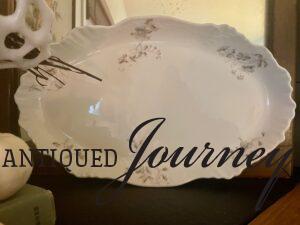
Treasure Hunting 101: A Beginner’s Guide to Antique Shopping
1. Have an Idea of What You Are Drawn To.
Many times antiquing can feel overwhelming if you don’t have any idea what you are looking for. Whenever I go into an antique store, I usually always have pieces in the back of my mind that I’m always looking for, whether that be copper, enamelware, or vintage linens.

Before you leave the house, I suggest taking a walk through and looking at spaces in your home that are in need of some character. From there, get a vision in your head of what colors or textures might work well there.
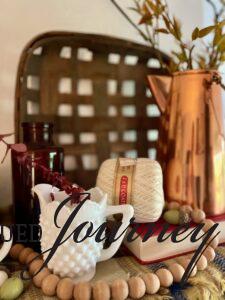
Maybe vintage books in olive green or navy blue would be beneficial. Look at adding some wood elements such as old corbels or wooden spoons. It’s a balance of keeping an open mind but also narrowing in on what you are drawn to.

2. Start Out Going With an Experienced Antique Shopper.
When I first started antique shopping, my husband’s family had been in the hobby for years. They knew all the in’s and out’s such as what things actually were, fair pricing, and where to go to find good deals. Truly, they taught me how to shop at antique stores.
It is so helpful to have someone along who knows their stuff when it comes to antique stores. I would have been so lost without them!

3. Get Creative on How Else You Could Use Something.
There might be a time when you will find an item that you love but don’t know where you would use it in your home. This is a time to think outside the box and notice if this piece could be used in a different way.
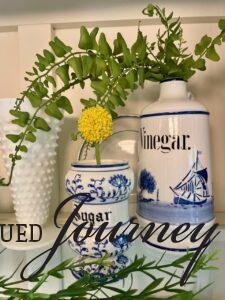
Here are some questions to ask yourself: “Could I hang this on a wall to use for art? Would it work well for storage? Maybe it could be used as a vase? How could this piece be incorporated into decor that I already have?”
Let’s use pretty vintage books as an example.
Instead of just putting them on a bookshelf, books can be used for adding height to displays, such as underneath lamps or smaller decor like pottery or bowls. It’s so fun to get creative and design a meaningful space!
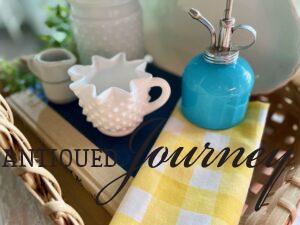
4. Don’t Forget to Look Up!
Antiques stores are always packed with goodies. Sometimes I find myself hurrying through just to see what’s around the next corner. Get down towards the floor to see what’s underneath other things and always look up. This is one of my top tips on how to shop at antique stores!
You don’t know how many times I’ve missed a pretty thing because I forgot to look to see what was up there!
Remember to take your time. Be present where you are and look all around in the booth that you are in. Then, move on to the next one!

5. It’s Okay to Ask For a Lower Price.
When it comes to pricing, don’t be afraid to be a little picky. It all comes down to if the item that you are looking at is worth that price to you. If you feel like the price is too high, go up to the counter and make an offer.
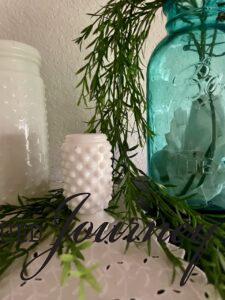
For reference, I don’t usually ask for more than $5 off the asking price. My husband recently found a really pretty vintage lamp at an antique store that was priced for $27. I told him to offer $23 and they accepted it!
Be fair about it but also understand its worth to you. If you really cant leave an item behind then it’s probably worth paying what is listed. You are, after all, supporting a small business!
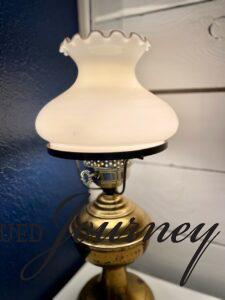
6. Look In Every Booth.
Even if a booth doesn’t seem to be your style, it’s important to go into every one and at least take a quick scan. Sometimes the booth that seems to be the least ‘you’ turns out to have a beautiful treasure that you wouldn’t have otherwise found!
Also, by looking in each area, you might discover a collectable that you love such as vintage glass, which will start off a new collection for your home.
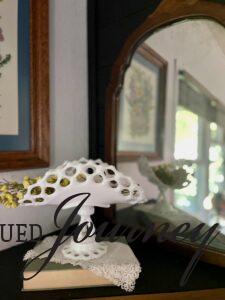
Curating a Cohesive Home with Vintage Finds
There you have it! I’ve said it before but antiquing is extremely special and exciting. Each time you go you never know what you are going to find.
Sometimes you come across a piece that you didn’t even know you existed or didn’t know you needed until just then.

Shop the Vintage Look!
Closing Tidbits on Treasure Hunting 101: Your Beginner’s Guide to Antique Shopping
You will understand the amazement and satisfaction after you go for the first time, I promise!
Be persistent, be patient, and let joy lead you. I hope the tips found in this guide for beginning antiquing encourages you to take a leap of faith and try something new.

Let me know in the comments below if you are a beginner or a novice. I would love to hear other tips that you have!

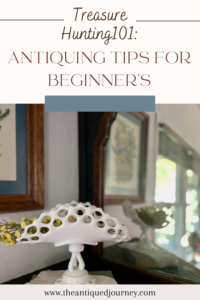
If you are new here, I’m Rachel, the writer and content creator here at The Antiqued Journey. I’m so happy to have you! I encourage you to stop by the ‘about me’ page to get to know me a little more.
Here on the blog, you will find loads of inspiration for decorating with vintage and antique decor, simple DIY crafts and many thrifting adventures. If that interests you, I invite you to sign up for my e-mail. You will receive a free digital download as a thank you!
Follow Along with The Antiqued Journey
- The Antiqued Journey shop
- Browse my LTK shop!
Other Posts to Enjoy
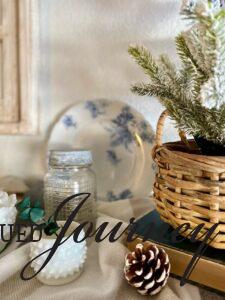
Winter Decorating with Vintage Finds

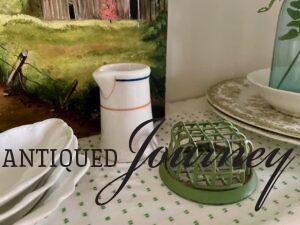

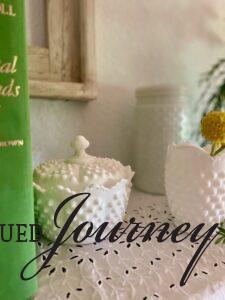


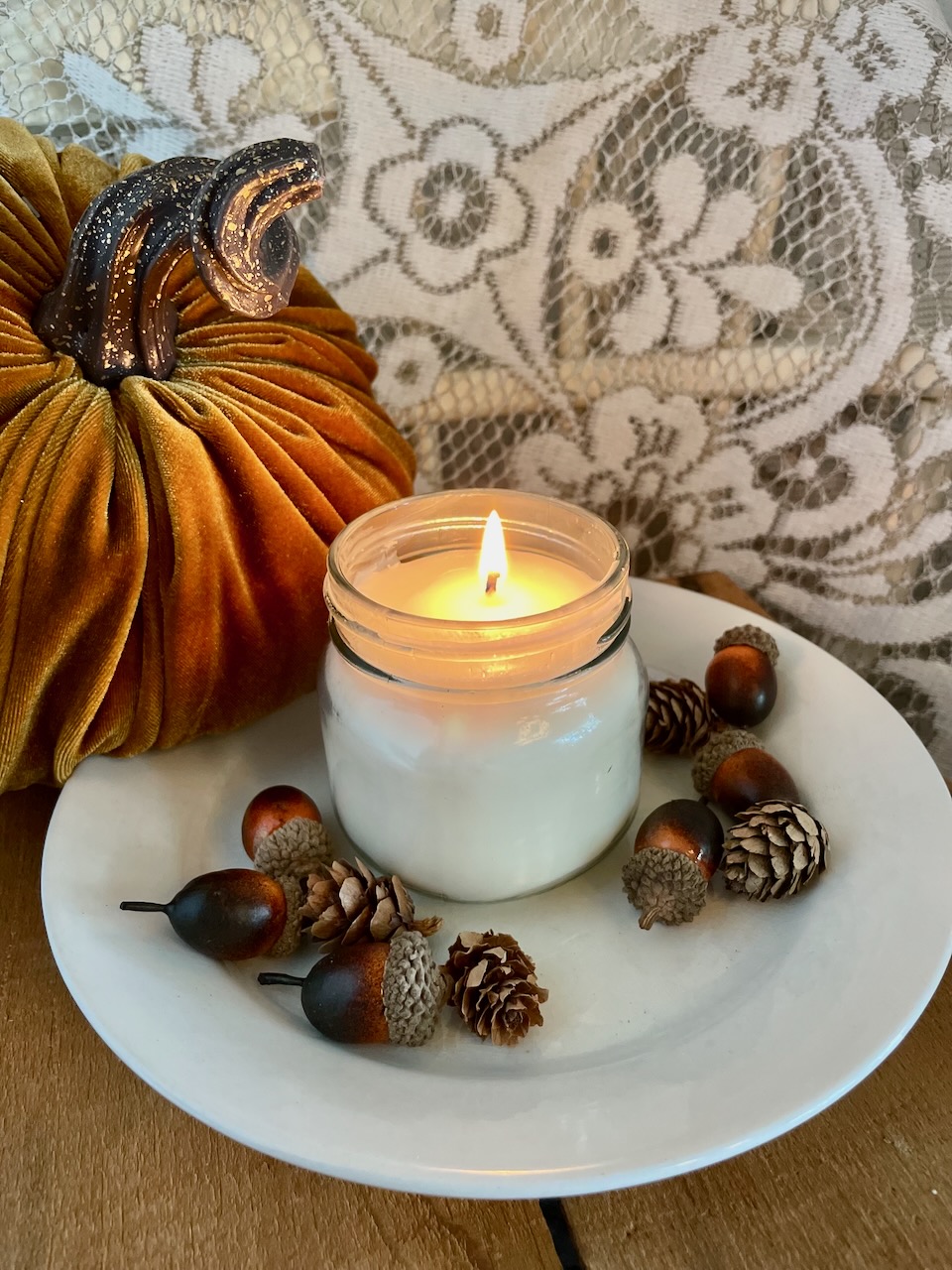
40 Comments. Leave new
[…] Old linens and textiles can range from under $5 to over $100. You can expect to pay $1.00 for vintage napkins at the thrift store whereas a handmade coverlet for a queen bed can cost $250 at an antique store. […]
All great tips! There’s nothing like antiquing:) Thanks for sharing at Vintage Charm. xo Kathleen
Thanks Kathleen!! You’re right…nothing better!!
[…] Maybe your grandma or aunt have an abundance of vintage books that you don’t know about! Antique stores, flea markets, and estate sales are all great places to look for vintage books as […]
And …recycling, reusing vintage and antiques is good for the planet. I’m happy to see someone under the age of 50 promoting antiques and vintage. Hugs, Sandi
Hi Sandi!
Absolutely!!! That’s the main reason I love it so much! I appreciate you taking the time to stop by today!
These are all great tips, Rachel. It can be very easy to get overwhelmed, so it helps to go with a list and someone who’s been before. And definitely take your time! It can be tempting to grab the first thing you see.
Hey, Jen!
Thank you!!
Love these fabulous tips, Rachel. Especially the one about thinking outside the box and how pieces can be used in multiple ways and throughout the year as well. Remembering to shop the booth spaces is such a good one too. Sometimes you find the most amazing things in the most unlikely places! Hugs and thanks so much for these tips, CoCo
Hello!
Thank you!! Wishing you a lovely weekend!
Great tips Rachel! I love thrifting and antique shopping. The old stuff is the best! Pinned 🙂
Hey, Cindy!
Thanks so much! Yes…the old stuff wins out EVERY TIME!! Hope you have a lovely weekend!
love all of your tips Rachel!
Thank you!!
Great tips Rachel! You are so fortunate to have family members for guidance! I am thankful for your tips since I am learning as I go! Thanks for sharing your knowledge with us!
Thank you!! I appreciate it, Donna!! Have a great rest of the weekend!
These are all great tips Rachel. It can seem overwhelming if you’re not used to shopping at these kinds of stores, you broke it down well for everyone.
Hello!
Thank you! That’s amazing to hear coming from you!!
Hey Rachel! I wish I had a post like this to read about 20 years ago. You have so many good tips! And -yes- looking way up and way down is how I found some of my best antiques!!
Hi!
Hahaha!! Thank you!! Just trying to help out my fellow antique shopper’s if they are new to the whole scene 🙂 Thanks for reading, friend!
So many great tips Rachel. You know I love a good antique and the thrill of the hunt is always fun. I went to an estate sale today and came home with a few new treasures. Have a great weekend.
Hey, Wendy!!
Thank you!! I’m so happy you found some god stuff! It’s always so much fun!
[…] on a journey to collect antiques, rare items, or specific memorabilia can be a fascinating hobby that offers opportunities for […]
[…] Thrifted Goodies Volume 16 A Beginner’s Guide for Antiquing […]
Great tips Rachel. Going into the not you booth is a great one. My GF doesn’t understand that and skips a whole bunch. Not me 🙂. Have a great day. XO- MaryJo
Thank you!!
[…] By using vintage decor in your bathroom, you are creating a space that is meaningful. Rather than going to a large retail store where you can buy the same decor as everyone else, source vintage pieces from thrift stores or antique stores. […]
[…] antique shops […]
[…] guys! I cannot begin to explain the thrill that comes with going thrifting or antiquing in a different […]
[…] antique shops […]
[…] Beginner’s Guide to Antiquing […]
[…] are some easy tips and tricks that I use when hunting for vintage books at thrift stores or vintage shops. If you don’t find any the first time around, try again another […]
[…] linens such as towels, table runners, or cloth napkins […]
I love antique stores.
They are SO FUN, aren’t they?! Thanks so much for stopping by today!
[…] of the decor that you see here has been found thrifted or purchased at antique shops. This method of decorating a home takes time and patience but I promise it’s so worth […]
[…] are popular with antique collectors today and are fun to look for. Here are some things to remember when hunting for crocks […]
[…] Antique stores yield great results for finding your own tobacco baskets. They come in various sizes, colors, and shapes and are so pretty to use as decor pieces. Some show more signs of wear than others but that just adds to the fine patina of the basket. […]
[…] summer decor is mainly vintage, either found at thrift stores or antique shops. I picked up a few ‘new’ pieces at the thrift store a few weeks ago and you can read all […]
[…] are new to this vintage thing and are wondering how to get into the antique shopping scene, this treasure hunting 101: your beginner’s guide to antiquing, is going to be so helpful for […]